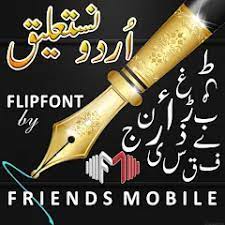Jameel Noori Nastaleeq APK
By: Khurram Baig
Rating: 4.7+ Downloads: 19, 930+ Size: 14.8 MB Updated: September 20, 2023.
Jameel Noori Nastaleeq Apk is a Kashida truetype font. It has been downloaded 1451161 times. 1985 users rated the font 3.73 out of 5. You can read more about Jameel Noori Nastaleeq Kashida and his character card in the following paragraphs.
Make sure you are human to download fonts for free. Nastaleeq is the main calligraphy used to express Persian characters and Urdu characters and is the most widespread style in Persian calligraphy. It was built in Iran in the 14th and 15th centuries.
It is commonly used to compose Arabic text (mainly for headings and titles) but is increasingly used in Persian, Urdu, and Turkish languages. It is used as composite verse and handicrafts in Iran, Afghanistan, Pakistan, India, and other countries.
A less refined version of the App meets the style supported for writing Kashmiri and Urdu and is used primarily for Pashto to Nasakh. In Persian, it is used as verse. Nastaleeq was used to create Ottoman Turkey which was known as Talik.

Download more similar Apk from our site Apkfreeload.com.
About Jameel Noori Nastaleeq Apk
Jameel Noori Nastaleeq Apk is one of the main calligraphic hands used to write Persian script and is traditionally the dominant style of Persian calligraphy. It developed in Iran in the 14th and 15th centuries. It is sometimes used to write texts in Arabic (where it is known as Tariq [citation needed] or Persian and is mainly used for headings and titles), but it is not always used.
Persian, Turkish, and Urdu are the most popular languages in this region. Effect Nastaleeq was (and still is) practiced as written poetry and as an art form in Iran, Pakistan, India, Afghanistan, and other countries.
A less elaborate version of Nastaleeq serves as the preferred style for writing Kashmiri, Punjabi, and Urdu, and is often substituted for Naskh for Pashto. In Persian, it is only used for poetry. It was historically used to write Ottoman Turkish, where it was known as talk (an entirely different Persian style, also called talk; to distinguish between the two, talk”).
It is the primary script of the post-Sasanian Persian script tradition and is equally important in the areas under its cultural influence. Languages of Iran (West Persian, Azerbaijani, Balochi, Kurdish, Luri, etc.), Afghanistan (Dari, Pashto, Uzbek, Turkmen, etc.), Pakistan (Punjabi, Urdu, Kashmiri, Saraiki, etc.),
and China’s Xinjiang Province. Uyghur is based on the Turkic language Nastaleeq. Going by the name talk (literally “to expose [the script]”), it was also popular with Ottoman calligraphers, who developed the Diwani (Diwani) and Ruka (Reka) styles.
Jameel Noori Nastaleeq Apk is one of the most linear styles of calligraphy in the Arabic alphabet. It has short vertical bars and long horizontal sans-serif bars. It is written with a stick of cane with a 5–10 mm (0.2–0.4 in) tip, kalam (“pen”, قلام in Arabic and Persian), and carbon ink called a quill pen.
The pen tip can be split in the middle to make ink absorption easier. Two important types of Nastaleeq tablets are the chalupa and the siya-mashka. A Chalisa (“cross” in Persian) usually consists of four diagonal lines (half-lines) of poetry, which represent an ethical, or poetic concept.
However, the panels of Siyah-Mashka (“Dark Forest”) communicate through composition and form rather than content. In ink painting, the repetition of certain letters or words (sometimes just one) covers practically the entire surface of the ink. So the content is of little value and inaccessible.

History
The name is Jameel Noori Nastaleeq Apk is a contraction of “Persian Naskh-e Taaliq, meaning hanging or suspended Naskh”. Almost all Safavid authors (such as Dust Muhammad or Qadi Ahmad) attribute the invention to Nastaliq Mir Ali Tabrezi, who lived in the late 14th and early 15th centuries. This tradition was challenged by Ellen Wright, who traces the development of Nastaliq in 14th-century Iran and shows how it gradually developed among the writers of Shiraz.
Also, according to his study, Gnostic does not have its origin in the combination of Nasak and Taliq, as is commonly believed, but only in Nasak. In addition to studying calligraphy, Alan Wright found a document by Jafar Tabrizi. 1430, after It should be known that Nastik is derived from Nasak. Some Shirazi [scribes] modified the [Nasak] by removing the flat titles [letters] at the bottom right of the [letters] Sin, Lam, and Nun. From other typefaces,
they reintroduced a curved, wide form and variations in line thickness. Then a new script was created called Jameel Noori Nastaleeq Apk. After some time, Tabrizi [author] Shirazi [author] gradually modified it, softening it and defining it as canon until Khwaja Mir Ali Tabrizi perfected the script.
Thus “our earliest written source also attributes the development of Nastaliq and Mir Ali Tabrizi to the Shirazi scribes”. The picture of Nastaliq’s origins presented by Elaine Wright is further complicated by the study of Francis Richard who, based on some manuscripts, argues that its early development was not limited to Shiraz.
Finally, many authors note that the development of Nastaleeq was a process that lasted several centuries. For example, Ghulam-Husain Yusofi, Ali Alperslan, and Sheila Blair have noted a gradual transition to Nastaleeq in some 13th-century manuscripts. Hamid Raza Afsari traces the earliest elements of the genre to 11th-century copies of Persian translations of the Qur’an.
Persian differs from Arabic in the relationship between straight and curved letters. Also missing is the definite article al-, whose authorities Alaf and Lam are responsible for the character and rhythm of the Arabic text. Floating scripts such as Talik and Nastaleeq were particularly suited to Persian writing—while Talik was used for court documents, Nastaleeq was developed for Persian poetry “whose semicircular letter-intercolumn rules contradict”.
The use of Nastaleeq quickly spread outside of Iran. The Timurids brought it to India, and Nastaleeq became the favorite script of the Mughal Persian court.
Famous Nastaleeq masters such as Muhammad Husain Kashmiri (d. 1611/1612) and Abd-al-Rahim Ambrin-Kalam worked for Akbar (1556–1605) and Jahangir (1605–1627). Another important calligrapher was Abd al-Rashid Dayalmi († 1671), grandson and pupil of Mir Imad, who became court calligrapher to Shah Jahan (1628-1658) after he arrived in India. Nastaleeq became the common script for writing Urdu at that time.
ADDITIONAL INFORMATION about Jameel Noori Nastaleeq Apk is the latest version.
Requires Android -5.0 and Up
Target: Android 9.0
File Size-14.8 MB
Current Version: v2.0.01-1
Package Name: com.jameel-noori
Rating – 4.5+
Price – Free

